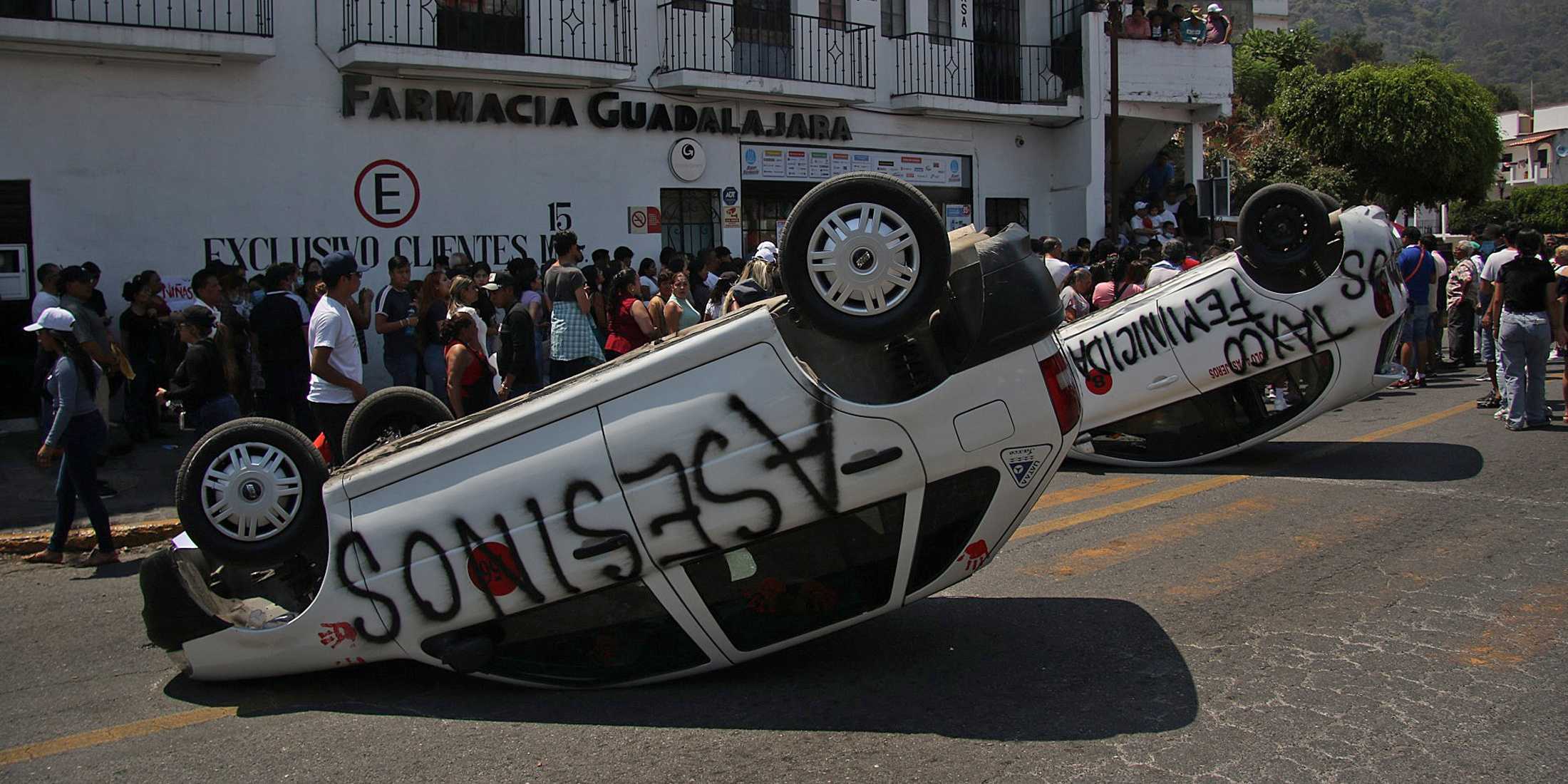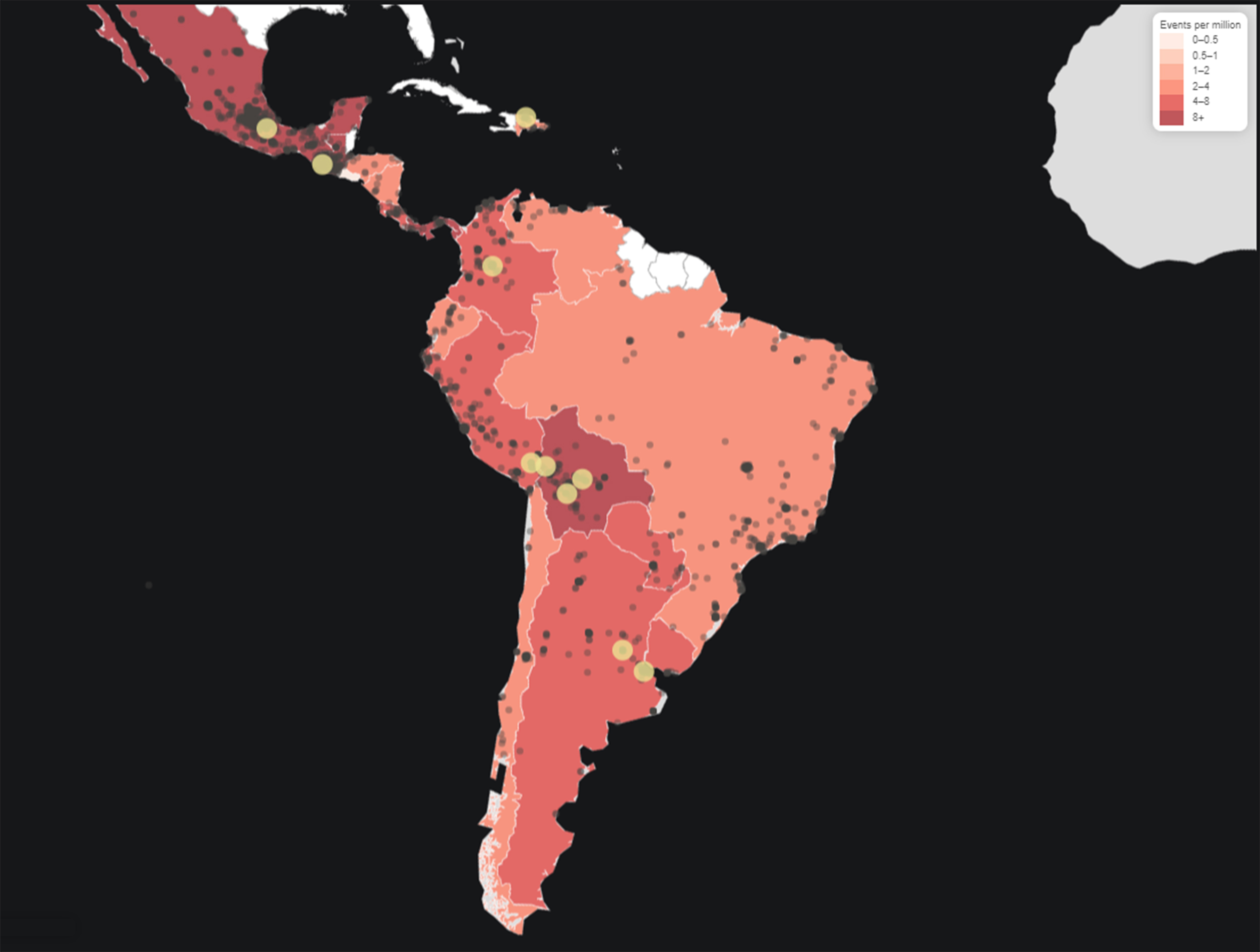Why do civilians take the law into their own hands? Using Mexico as an example, ETH researcher Enzo Nussio shows how it's a combination of a weak state and strong local communities.

In brief
- Based on a new dataset of 2,818 lynchings in 18 Latin American countries, ETH researcher Enzo Nussio investigated the factors that lead to higher lynching rates.
- The conflict researcher showed that lynching occurs more frequently in Mexican municipalities where the state is weak, local community ties are strong and people feel obliged to maintain collective security.
- People get carried away with these acts of violence because they give in to group pressure and consider the safety of the group more important than the rights of the individual.
In late March 2024, an eight-year-old girl went missing in Taxco, a small Mexican town two-and-a-half hours' drive south of Mexico City. Even before the police found the girl's lifeless body, the local community had already identified a woman they suspected of being responsible for the disappearance. Dozens of the town's residents gathered outside the suspect's house, smashed down the door and dragged her out into the street. The mob then proceeded to beat the woman to death in front of the cameras of several media organisations who were in town for an event. Although police were present, they failed to intervene quickly or decisively enough.
Such cases of lynching are common not only in Mexico but also in Brazil, India, Indonesia, Pakistan, Nigeria and South Africa - yet there is still no consensus among researchers as to why a group of civilians would suddenly take the law into their own hands and use physical violence against alleged wrongdoers. In an attempt to answer this question, ETH conflict researcher Enzo Nussio has created the first cross-national lynching dataset that covers the whole of Latin America.
Nussio, who works in the Center for Security Studies at ETH Zurich, recently published papers on this topic in several scholarly journals - and his work sheds new light on a little-understood phenomenon. "We see cases of lynching primarily in places where a weak state is combined with a close-knit local community that prioritises collective security over the lives of alleged wrongdoers," he says. This, he adds, also explains what happened in Taxco.
Lynching incidents systematically investigated for the first time
Although lynching is a common form of collective violence, much of the research on this topic is based on case studies of individual lynchings. Attempts to carry out a systematic and comparative examination of multiple cases across different countries have previously been hampered by a lack of data. This gap has now been filled by a new dataset created by Nussio and coauthor Govinda Clayton.
Compiled on the basis of media reports, their dataset covers 2,818 lynchings carried out in 18 Latin American countries from 2010 to 2019, 543 of which resulted in at least one fatality. The most frequent trigger for the violence was alleged theft, followed by alleged murder and child abuse. Slightly fewer than half of all lynchings were perpetrated by groups consisting of between 20 and 99 individuals; just under a third involved groups of over 100.
With 261 cases over 10 years, Guatemala is the country with the highest lynching rate in relation to its population of some 14 million people. Next comes Bolivia, followed by Mexico, which - at 1,134 - is the country with the largest absolute number of lynching events. This data, which the researchers have shared on an external pageinteractive website, provides a unique insight into the factors behind lynchings.
Weak states conducive to lynchings
"Numerous studies have shown that lynching occurs primarily in places where the state and its security forces are unable to protect the civilian population from crime," Nussio says. People in these places tend to feel like victims and develop a need to take justice into their own hands.
This is compounded by the fact that state institutions in weak states are often perceived to be illegitimate and corrupt. "For example, when even the police don't obey the law or are in league with criminals, normal citizens then feel less of an obligation to uphold the law themselves," Nussio says. Consequently, violent vigilantism ends up becoming a legitimate tool of social control and local security.
Solidarity, peer pressure and shared values play an important role
Yet this context alone is not enough to explain why people suddenly resort to violence. Why do ordinary civilians take part in acts of often brutal violence against alleged wrongdoers if they stand to benefit from the deterrent effect of these acts even as non-participants? Nussio argues that the reason lies in close-knit community ties.
He starts by providing evidence to support this hypothesis on the level of the individual: based on a representative survey carried out in Mexico City, he shows how people who have personal ties to many people in their community are more inclined to participate in lynchings, or are more likely to have already done so.
Nussio draws on the same survey data to explain why this might be the case: "Having many personal ties to your neighbours or to the local community provides the basis for solidarity and peer pressure," he says. The more a person is connected to their community, the more likely they are to feel responsible for keeping it safe.
Moreover, the cost of non-participation is higher, since individuals who stand up to a lynch mob are putting their reputation as a cooperative member of the community at risk. "If I decide not to participate, then maybe my neighbours won't come to my aid the next time someone threatens me," says Nussio, explaining the social logic of peer pressure.
Furthermore, Nussio believes that, in the moral hierarchy, collective security ranks above the physical integrity of the individual in communities or neighbourhoods in which many people have close ties to one another. In Taxco, for example, the perceived security of the community was seen as more important than the individual rights of the alleged wrongdoer.
Checked with earthquake data
But Nussio's research is not confined to the level of the individual. He is also keen to discover why lynching rates in Mexico vary so markedly from one area to the next. "Lynchings occur more frequently in municipalities where neighbours have closer ties," he says. Close communities are regarded as those in which members regularly work together and help each other. To determine how willing people are to cooperate, Nussio analysed the answers from a representative survey encompassing the whole of Mexico.
To corroborate the results of this analysis, he also took advantage of a natural experiment in the form of an earthquake that struck the Mexico City region in 2017. Published research has shown that natural disasters such as earthquakes can bring communities closer together. Higher lynching rates would therefore be expected in those communities that were most exposed to the earthquake. "That's exactly what I found in my analysis. There was a clear link between the earthquake and higher lynching rates," Nussio says.
In a separate study on the tsunami that struck the Indonesian province of Aceh in 2004, Nussio and Clayton showed that this correlation is not restricted to Mexico. Once again, their findings showed a significant increase in the lynching rate in post-tsunami Aceh as compared to other parts of Indonesia.
Lynching in the West
Cases of lynching are now very rare in Western countries. Nussio attributes this to people's trust in the state and its security forces to maintain order, keep them safe and ensure criminals are brought to justice. Moreover, Western societies tend to be significantly more individualistic than those in Latin America and Southeast Asia. People feel less commitment and responsibility towards their neighbours or local community.
References
Nussio E, The 'Dark Side' of Community Ties. Collective Action and Lynching in Mexico, American Sociological Review 2024. doi: external page10.1177/00031224241253268.
Nussio E, Clayton G, Introducing the Lynching in Latin America (LYLA) Dataset, Journal of Peace Research 2024. doi: external page10.1177/00223433231220275.
Nussio E, How Moral Beliefs Influence Collective Violence. Evidence from Lynching in Mexico, Comparative Political Studies 2023. doi: external page10.1177/00104140231223747
Nussio E, Clayton G, A Wave of Lynching. Morality and Authority in Post-Tsunami Aceh. Comparative Politics 2022, 55 (2): 313-36. doi: external page10.5129/001041523X16645676522699







